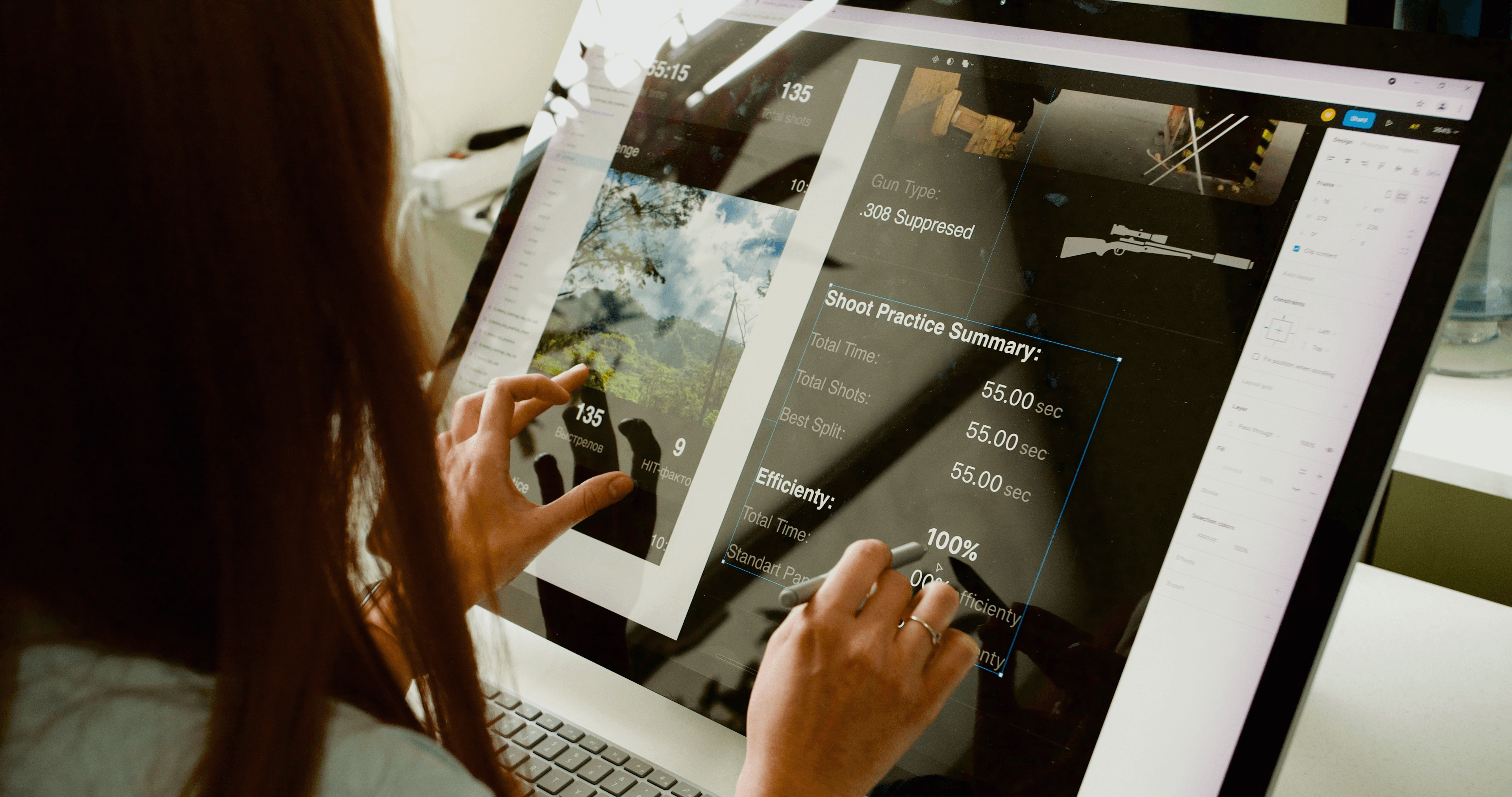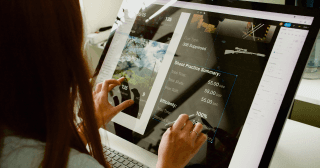

Industrial Design: A Comprehensive Overview
Industrial Design: A Comprehensive Overview
Industrial design is a discipline that combines creativity, aesthetics, and functionality to create innovative and visually appealing products. It involves the process of designing products, systems, and services that not only meet user needs but also enhance the overall user experience. In this article, we will provide a comprehensive overview of industrial design, its role in product development, and the impact of industrial designers in shaping our world.
Industrial design is a discipline that combines creativity, aesthetics, and functionality to create innovative and visually appealing products. It involves the process of designing products, systems, and services that not only meet user needs but also enhance the overall user experience. In this article, we will provide a comprehensive overview of industrial design, its role in product development, and the impact of industrial designers in shaping our world.
Industrial design is often associated with the physical appearance of a product, but it goes beyond aesthetics. It encompasses the entire user experience, including usability, ergonomics, and interaction design. Industrial designers consider factors such as form, materials, manufacturing processes, and sustainability to create products that are not only visually appealing but also functional, user-friendly, and environmentally conscious.
Industrial design is often associated with the physical appearance of a product, but it goes beyond aesthetics. It encompasses the entire user experience, including usability, ergonomics, and interaction design. Industrial designers consider factors such as form, materials, manufacturing processes, and sustainability to create products that are not only visually appealing but also functional, user-friendly, and environmentally conscious.
The role of an industrial designer is to bridge the gap between art and engineering. They work closely with cross-functional teams, including engineers, marketers, and manufacturers, to translate ideas into tangible products. Industrial designers have a deep understanding of human behavior, cultural trends, and market dynamics, allowing them to create products that resonate with users and meet market demands.
The role of an industrial designer is to bridge the gap between art and engineering. They work closely with cross-functional teams, including engineers, marketers, and manufacturers, to translate ideas into tangible products. Industrial designers have a deep understanding of human behavior, cultural trends, and market dynamics, allowing them to create products that resonate with users and meet market demands.
At UDTECH, we recognize the importance of industrial design in the product development process. Our projects, showcased at https://udtech.co/cases, demonstrate the significant role industrial design plays in creating successful products from scratch.
At UDTECH, we recognize the importance of industrial design in the product development process. Our projects, showcased at https://udtech.co/cases, demonstrate the significant role industrial design plays in creating successful products from scratch.
The process of industrial design typically involves several key stages, including research, ideation, concept development, prototyping, and refinement. Let's explore each of these stages in detail:
The process of industrial design typically involves several key stages, including research, ideation, concept development, prototyping, and refinement. Let's explore each of these stages in detail:
1. Research: The first step in industrial design is conducting thorough research. This involves understanding user needs, market trends, and technological advancements. Industrial designers gather insights through market research, user surveys, and competitor analysis to identify opportunities and define design goals.
1. Research: The first step in industrial design is conducting thorough research. This involves understanding user needs, market trends, and technological advancements. Industrial designers gather insights through market research, user surveys, and competitor analysis to identify opportunities and define design goals.
2. Ideation: Once the research is complete, industrial designers engage in brainstorming sessions to generate concepts and ideas. This stage involves exploring different design possibilities, sketching, and creating mood boards to visualize potential directions. The goal is to generate a range of concepts that can be further developed.
2. Ideation: Once the research is complete, industrial designers engage in brainstorming sessions to generate concepts and ideas. This stage involves exploring different design possibilities, sketching, and creating mood boards to visualize potential directions. The goal is to generate a range of concepts that can be further developed.
3. Concept Development: In this stage, industrial designers refine the selected concepts and develop them into detailed design proposals. They create 2D and 3D renderings, create digital models, and use computer-aided design (CAD) software to bring the concepts to life. Industrial designers collaborate closely with engineers to ensure that the design is technically feasible and can be manufactured efficiently.
3. Concept Development: In this stage, industrial designers refine the selected concepts and develop them into detailed design proposals. They create 2D and 3D renderings, create digital models, and use computer-aided design (CAD) software to bring the concepts to life. Industrial designers collaborate closely with engineers to ensure that the design is technically feasible and can be manufactured efficiently.
4. Prototyping and Testing: Prototyping is a critical step in the industrial design process. It involves creating physical or digital prototypes to test the design's functionality, ergonomics, and user experience. Industrial designers work closely with engineers and manufacturers to create prototypes that closely resemble the final product. Iterative testing and refinement help identify and address any design flaws or usability issues.
4. Prototyping and Testing: Prototyping is a critical step in the industrial design process. It involves creating physical or digital prototypes to test the design's functionality, ergonomics, and user experience. Industrial designers work closely with engineers and manufacturers to create prototypes that closely resemble the final product. Iterative testing and refinement help identify and address any design flaws or usability issues.
5. Refinement and Production: Once the prototype has been tested and refined, industrial designers work on finalizing the design for production. They collaborate with manufacturers to select the appropriate materials, manufacturing processes, and finishes. Industrial designers ensure that the design is optimized for production efficiency, cost-effectiveness, and quality control.
5. Refinement and Production: Once the prototype has been tested and refined, industrial designers work on finalizing the design for production. They collaborate with manufacturers to select the appropriate materials, manufacturing processes, and finishes. Industrial designers ensure that the design is optimized for production efficiency, cost-effectiveness, and quality control.
Throughout the industrial design process, the focus remains on creating products that not only meet user needs but also align with brand identity and business objectives. Industrial designers consider factors such as brand image, target market, and market positioning to create products that stand out in the competitive landscape.
Throughout the industrial design process, the focus remains on creating products that not only meet user needs but also align with brand identity and business objectives. Industrial designers consider factors such as brand image, target market, and market positioning to create products that stand out in the competitive landscape.
In conclusion, industrial design is a comprehensive discipline that combines creativity, aesthetics, and functionality to create innovative and user-centric products. Industrial designers play a crucial role in the product development process, bridging the gap between art and engineering. At UDTECH, we understand the significance of industrial design, and it is at the core of all the projects we undertake. To witness the impact of industrial design in real-world projects, explore the examples showcased at https://udtech.co/cases. Embrace industrial design as a strategic approach to create products that not only look good but also provide exceptional user experiences.
In conclusion, industrial design is a comprehensive discipline that combines creativity, aesthetics, and functionality to create innovative and user-centric products. Industrial designers play a crucial role in the product development process, bridging the gap between art and engineering. At UDTECH, we understand the significance of industrial design, and it is at the core of all the projects we undertake. To witness the impact of industrial design in real-world projects, explore the examples showcased at https://udtech.co/cases. Embrace industrial design as a strategic approach to create products that not only look good but also provide exceptional user experiences.